 Aggressive dogs pose serious threats to the community and are far more prevalent than one would think. In 2013, one-third of all homeowners’ insurance liability claims paid was due to dog bite claims. Families with “bully breed” dogs, such as pit bulls and Rottweilers may find themselves unable to obtain homeowner’s insurance or having to pay higher premiums as these dogs have higher aggressiveness statistics. Dog attacks can be prevented by appropriate training and raising of the dog. It’s important to understand some key dog-training principles to raise a safe, friendly dog.
Aggressive dogs pose serious threats to the community and are far more prevalent than one would think. In 2013, one-third of all homeowners’ insurance liability claims paid was due to dog bite claims. Families with “bully breed” dogs, such as pit bulls and Rottweilers may find themselves unable to obtain homeowner’s insurance or having to pay higher premiums as these dogs have higher aggressiveness statistics. Dog attacks can be prevented by appropriate training and raising of the dog. It’s important to understand some key dog-training principles to raise a safe, friendly dog.
Don’t yell or scream.
While dog training can be stressful, yelling and screaming at the dog is not the answer. These actions cause anxiety and stress in the dog and build tension. In order to successfully train your dog, he/she needs to respect you. By constantly yelling, your dog will just become used to it and start to ignore your commands.
Don’t use negative reinforcement.
Negative reinforcement, like hitting or using a shock collar invokes fear in your dog. Fear may cause certain breeds of dog to act out in aggression. Positive reinforcement with affection, treats, or toys have been found to be more effective than negative reinforcement.
Ensure your dog is fed properly.
One way to prevent food aggression is to ensure that your dog is fed properly. Never withhold meals as a source of punishment. Your dog may then feel the need to protect his food once he is fed. Be sure to feed your dog at least twice daily and according to the portion guidelines set forth by your vet.
Start socialization early.
Early socialization is a key component of a well mannered dog. Puppies and young dogs should be socialized with other people, children, and other animals.
Never resort to physical abuse.
Physical abuse is a key cause of aggression in dogs. Dogs should never be punched, kicked, or physically abused in other ways after they have misbehaved. This causes them to feel threatened and may, in turn, lead to aggressive or violent behavior.
When raised appropriately, all breeds of dogs can become wonderful members of the family. A state lawmaker in Connecticut is currently trying to introduce legislation that would not allow insurance companies to increase homeowners insurance based on the breed of their dog. However, until this legislation is enacted, it’s incredibly important to be a responsible dog owner. Complete thorough research on the dog breed you are considering prior to bringing it home. Be sure to make training your pup a priority. With plenty of research, healthy attention, love, and discipline you can ensure that your dog is a great addition to your family.
All dogs are considered “man’s best friend”, but it’s important to know if your family pet will affect your insurance premium. If you’re unsure if your dog falls under the same category as Pit bulls or Rottweilers, contact Waitte’s Insurance Agency Inc. for a consultation.
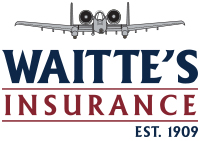
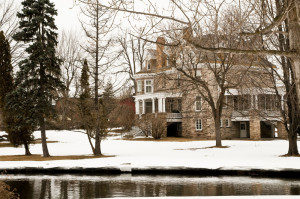 As the days grow shorter and the air grows colder, people around the country experience the telltale signs of the fall season. Along with the approach of the holidays and the changing color of the leaves, however, you can also expect unpredictable weather patterns; from sudden storms to early snowfall. Especially in New England, there is no telling when temperatures may drastically drop – an event that can have significant impacts on your home.
As the days grow shorter and the air grows colder, people around the country experience the telltale signs of the fall season. Along with the approach of the holidays and the changing color of the leaves, however, you can also expect unpredictable weather patterns; from sudden storms to early snowfall. Especially in New England, there is no telling when temperatures may drastically drop – an event that can have significant impacts on your home.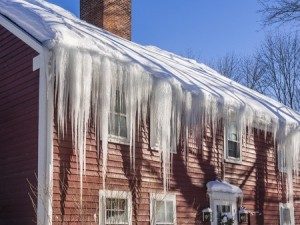 When you have snow on your roof, it should melt gradually and drain into your gutters. If you have ice dams, though, melted snow isn’t able to drain properly. Ice dams form when parts of your roof near the top are warmer than the rest, causing snow in those areas to melt faster. Melted snow then runs down toward the eaves, which are colder, where it freezes and forms blockages called ice dams. These dams block additional melted snow from being able to drain into your gutters, causing it to flow under the eaves and potentially damage your home’s interior. Fortunately, you can take the following steps to prevent ice dams from forming.
When you have snow on your roof, it should melt gradually and drain into your gutters. If you have ice dams, though, melted snow isn’t able to drain properly. Ice dams form when parts of your roof near the top are warmer than the rest, causing snow in those areas to melt faster. Melted snow then runs down toward the eaves, which are colder, where it freezes and forms blockages called ice dams. These dams block additional melted snow from being able to drain into your gutters, causing it to flow under the eaves and potentially damage your home’s interior. Fortunately, you can take the following steps to prevent ice dams from forming. Buying a home is one of the greatest decisions that you make in your life, which makes buying homeowners insurance equally as important. Having a suitable insurance policy or protection plan for your phone, computer, or other personal items is essential for covering your investment, right? So why wouldn’t you make sure that you got the same out of your homeowner’s insurance?
Buying a home is one of the greatest decisions that you make in your life, which makes buying homeowners insurance equally as important. Having a suitable insurance policy or protection plan for your phone, computer, or other personal items is essential for covering your investment, right? So why wouldn’t you make sure that you got the same out of your homeowner’s insurance?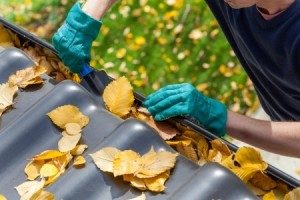 Towards the beginning of September, people begin to notice that change is in the air. The air gets colder, the days get shorter, and the leaves begin to evolve into a kaleidoscopic splendor. The Autumn season is quickly approaching, and homeowners must take the proper precautions to ensure their home will survive the sometimes harsh weather conditions of the later months in the year. Here are 10 tips for home maintenance that will prepare you for fall in New England:
Towards the beginning of September, people begin to notice that change is in the air. The air gets colder, the days get shorter, and the leaves begin to evolve into a kaleidoscopic splendor. The Autumn season is quickly approaching, and homeowners must take the proper precautions to ensure their home will survive the sometimes harsh weather conditions of the later months in the year. Here are 10 tips for home maintenance that will prepare you for fall in New England: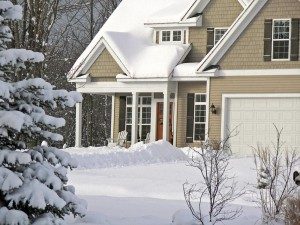 With freezing cold temperatures, you need to make sure to protect your home. In addition to having Norwich CT House Insurance, you must take the necessary steps to keep your home safe and ready for winter. Your best bet is to safeguard against the following winter complications, but in even a worst-case scenario, having proper Norwich CT house insurance will lessen any stressful situation that may arise.
With freezing cold temperatures, you need to make sure to protect your home. In addition to having Norwich CT House Insurance, you must take the necessary steps to keep your home safe and ready for winter. Your best bet is to safeguard against the following winter complications, but in even a worst-case scenario, having proper Norwich CT house insurance will lessen any stressful situation that may arise.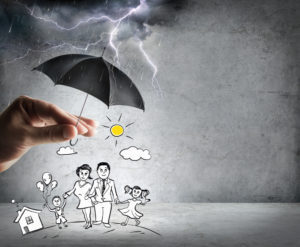 Connecticut personal umbrella insurance is a safeguard that protects you from incurring unexpected expenses as the result of an accident. And while this sounds like the pitch for the auto and homeowners insurance policies that you already have, it’s actually a bit different.
Connecticut personal umbrella insurance is a safeguard that protects you from incurring unexpected expenses as the result of an accident. And while this sounds like the pitch for the auto and homeowners insurance policies that you already have, it’s actually a bit different.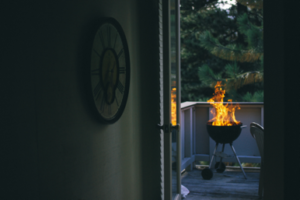 So you say you’ve never had to file any homeowner’s insurance claims. (knock on wood!) If you fall into this category, then you’re one of the fortunate ones. However, as long as you’re aware that disasters can occur at any moment, you’re more prone to take precautions to lessen the blow whenever the need to file a claim may pop up. Even the most common damages or injuries that occur inside or around the home can be minimalized with a few simple preventative measures. Check out some of the ways you can decrease the likelihood of having to file a claim on your home.
So you say you’ve never had to file any homeowner’s insurance claims. (knock on wood!) If you fall into this category, then you’re one of the fortunate ones. However, as long as you’re aware that disasters can occur at any moment, you’re more prone to take precautions to lessen the blow whenever the need to file a claim may pop up. Even the most common damages or injuries that occur inside or around the home can be minimalized with a few simple preventative measures. Check out some of the ways you can decrease the likelihood of having to file a claim on your home.